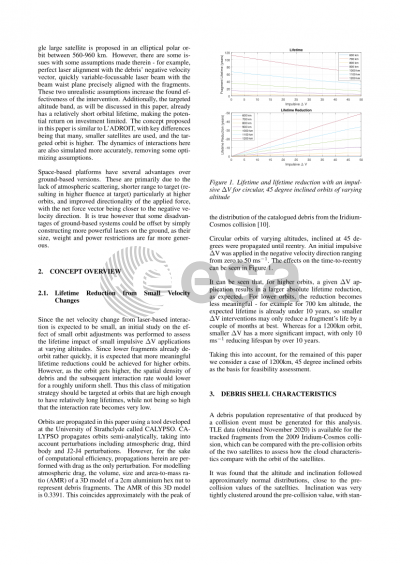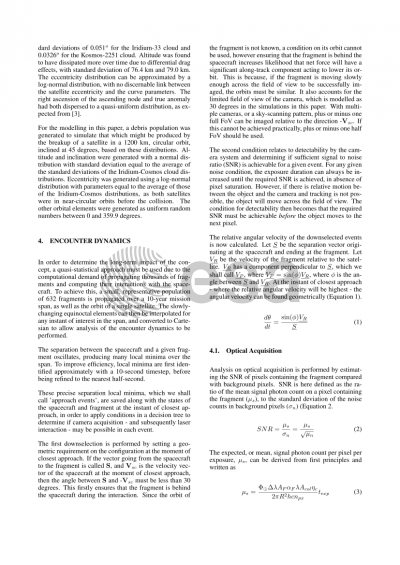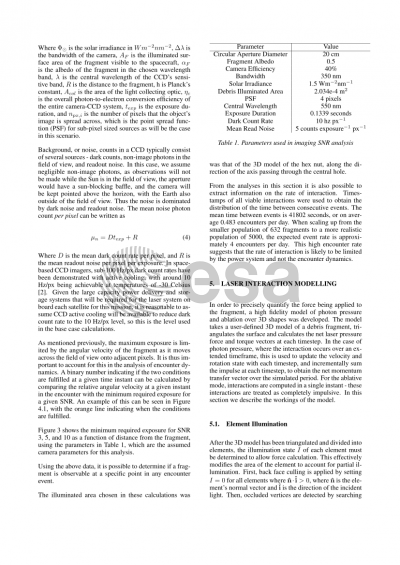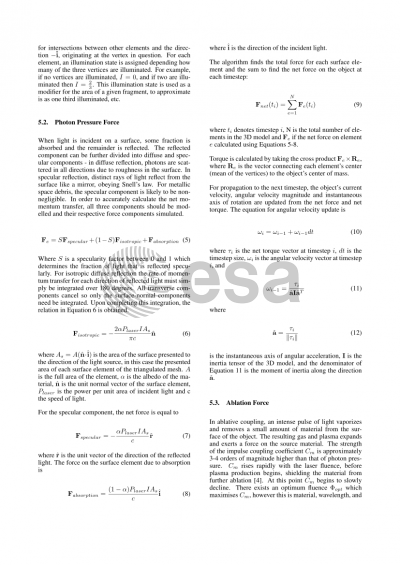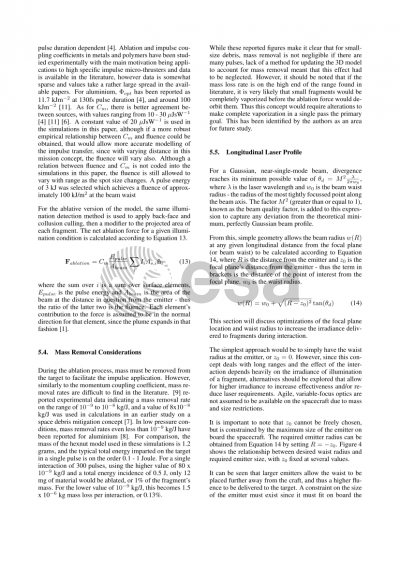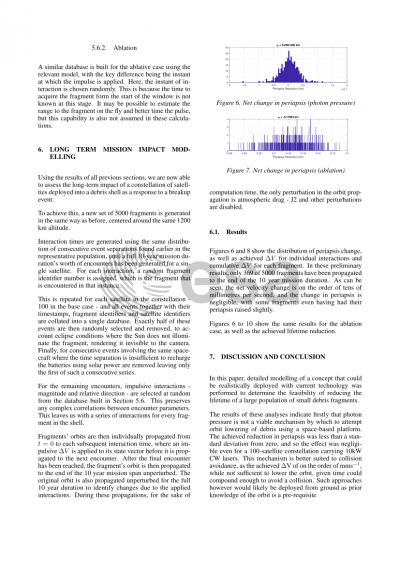Document details

Abstract
Small (<10cm) debris fragments present a significant threat to all operational satellites in orbit. Although numerous strategies for debris mitigation have been proposed, most active space-based methods involve rendezvous maneuvers with targeted pieces of debris, making them unsuitable for the cleaning up of large populations of small-size fragments. Previously proposed concepts are more suitable for removing larger objects which are potential sources of further debris. To date few strategies have been proposed to deal with large numbers of fragments, particularly as a response to collision events, which is the focus of this paper.
This paper proposes an approach to progressively clean up debris clouds using light pressure from space-borne continuous-wave lasers. The goal of the concept we propose is to reduce the average lifetime of a debris cloud, rather than completely deorbiting individual fragments. This concept builds on previous work by the authors who proposed an equivalent concept in 2011 (see Vasile IAC2011). The idea is to have a small constellation of satellites in orbit carrying lasers capable of illuminating passing fragments to lower their orbits and reduce lifetime. Targets are identified on-the-fly by an onboard camera and interacted with whenever they pass close to a satellite, meaning no propellant is expended to rendezvous with fragments and, subsequently, the lifespan of the pusher satellites is not propellant limited.
The paper presents first a detailed model of photon pressure acting on debris fragments with different geometries and compositions, and an analysis of camera performance to determine maximum tracking distance. We then present a statistical characterization of typical encounters based on orbit propagation and the aforementioned proton pressure model. This is used to generate and simulate interactions with a debris cloud of 10,000 fragments over a 10 year mission duration for a small constellation. We finish with an analysis of the possibility of estimating the orbits of the encountered fragments from the camera data, and a high-level discussion on power and thermal considerations for the laser system.
Preview

